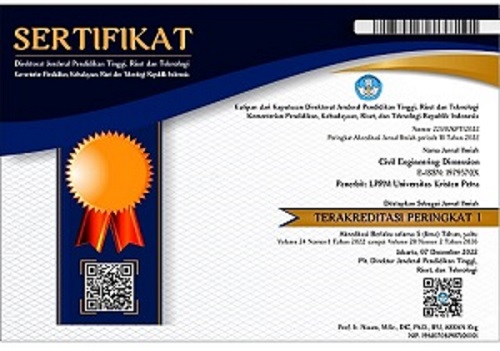A Modal Pushover Analysis on Multi-Span Concrete Bridges to Estimate Inelastic Seismic Responses
 :
:
https://doi.org/10.9744/ced.9.1.pp.%2033-41
Abstract
The performance of Modal Pushover Analysis (MPA) in predicting the inelastic seismic response of multi-span concrete bridges is investigated. The bridge is subjected to lateral forces distributed proportionally over the span of the bridge in accordance to the product of mass and displaced shape. The bridge is pushed up to the target displacement determined from the peak displacement of the nth mode inelastic Single Degree of Freedom System derived from Uncoupled Modal Response History Analysis (UMRHA). The peak response from each mode is combined using Square-Root of Sum-of-Square (SRSS) rule. Although the use of SRSS rule is not appropriate in this bridge and the displaced pattern is shifted from the elastic shape due to yielding, MPA can predict well the total peak response of the bridge in inelastic range.Downloads
Published
2007-04-03
How to Cite
Muljati, I., & Warnitchai, P. (2007). A Modal Pushover Analysis on Multi-Span Concrete Bridges to Estimate Inelastic Seismic Responses. Civil Engineering Dimension, 9(1), pp. 33-41. https://doi.org/10.9744/ced.9.1.pp. 33-41
Issue
Section
Articles
License
Authors who publish with this journal agree to the following terms:- Authors retain the copyright and publishing right, and grant the journal right of first publication with the work simultaneously licensed under a Creative Commons Attribution License that allows others to share the work with an acknowledgement of the work's authorship and initial publication in this journal.
- Authors are able to enter into separate, additional contractual arrangements for the non-exclusive distribution of the journal's published version of the work (e.g., post it to an institutional repository or publish it in a book), with an acknowledgement of its initial publication in this journal.
- Authors are permitted and encouraged to post their work online (e.g., in institutional repositories or on their website) followingthe publication of the article, as it can lead to productive exchanges, as well as earlier and greater citation of published work (See The Effect of Open Access).
















